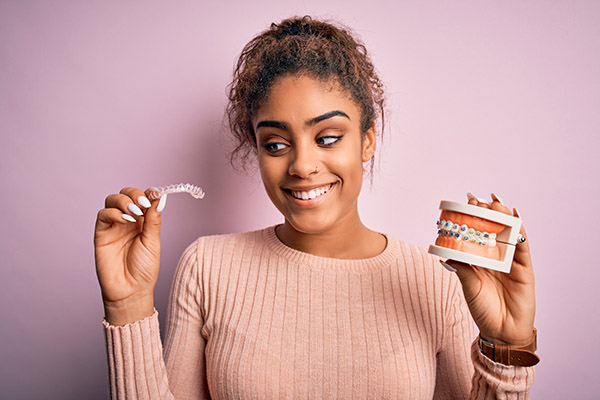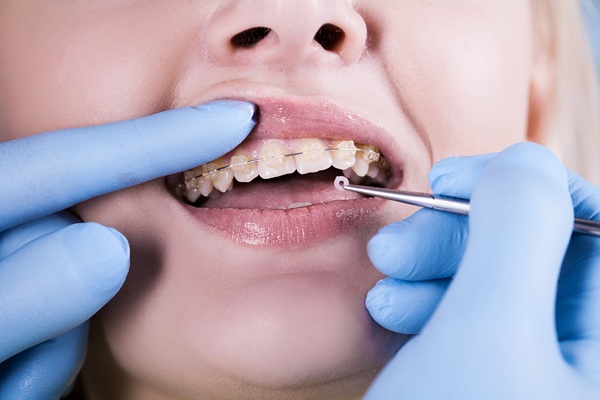 Many have heard of traditional metal braces, but fewer are familiar with how lingual braces for orthodontic therapy work and the unique advantages they can offer. This review discusses the basics of lingual braces to help you determine if treatment is right for you according to your needs and treatment preferences.
Many have heard of traditional metal braces, but fewer are familiar with how lingual braces for orthodontic therapy work and the unique advantages they can offer. This review discusses the basics of lingual braces to help you determine if treatment is right for you according to your needs and treatment preferences.
Orthodontic therapy: A general overview of lingual braces
Lingual braces are more discreet and just as effective as traditional metal braces, and they are able to treat more severe cases than clear aligners are able to treat. This makes them a great option for many patients who are interested in achieving an ideal alignment of their teeth and jaw.
What are lingual braces?
Lingual braces utilize the same teeth straightening concept as traditional metal braces. The difference, however, is that lingual brackets and wires attach to the inside (back) of teeth as opposed to the visible front side of teeth. This makes them more discrete while still offering the same quality benefits that traditional metal braces are able to offer.
What are the benefits of lingual braces?
Lingual braces are more discreet than traditional braces because they attach to the back of teeth rather than the front. In many cases, others are not likely to notice they are being worn. Lingual braces are also highly effective and can even treat more severe misalignments, which is not usually the case with clear aligners. Treatment is also monitored by an orthodontist to ensure the best possible results are achieved.
Who is the ideal candidate for lingual braces?
Lingual braces are often recommended for patients that want all of the benefits that traditional braces provide over clear aligners but want a more discreet way of straightening their smile. An orthodontist can explain all orthodontic therapy options in detail during a consultation visit.
How long does orthodontic therapy with lingual braces take?
The treatment timeframe that you can expect with lingual braces depends on a variety of factors, including the severity of the misalignment that is being corrected and how well the patient follows the treatment plan. The average patient is able to complete their treatment plan in around two years, although some patients are able to complete it much faster if they do not skip visits to have the braces adjusted and care for their teeth properly throughout treatment.
What can I expect after lingual braces treatment?
Patients are required to wear a retainer after they wear lingual braces to help keep teeth in the proper position while the jaw forms around the new teeth alignment. At first, the patient may be asked to wear the retainer for a large majority of the day. Eventually, the patient will only have to wear their retainer at night.
Are you ready to begin orthodontic therapy with lingual braces?
Everyone deserves a beautiful smile that makes them feel good. If you have alignment imperfections with your smile that cause a cosmetic or oral health concern, then contact our practice today to schedule a consultation visit.
Request an appointment or call Michael Emanuel DDS PLLC at 718-635-4822 for an appointment in our Brooklyn office.
Related Posts
Curious about orthodontic treatment? Read on to learn more. Straight teeth and properly aligned jaws make for a healthy and functional smile. Many people are lucky to have naturally straight teeth, but others require orthodontic intervention to correct overcrowding, gaps, or misalignment. In some cases, orthodontic therapy can extend far beyond repositioning the teeth in…
Discovering you need orthodontic care does not have to be a worrisome situation. The orthodontist will help you the whole way, and the staff will guide you on any concerns, ranging from financing to maintenance. If you have booked an appointment with an orthodontist, this piece provides a guide on what to expect and questions…
Maintaining the position of the teeth after orthodontic treatment requires the use of dental retainers. Read on to learn about the different types of retainers available. As soon as the braces or aligners come off, your teeth will begin repositioning themselves to where they were before treatment. To avoid relapse, you should use retainers. They…


